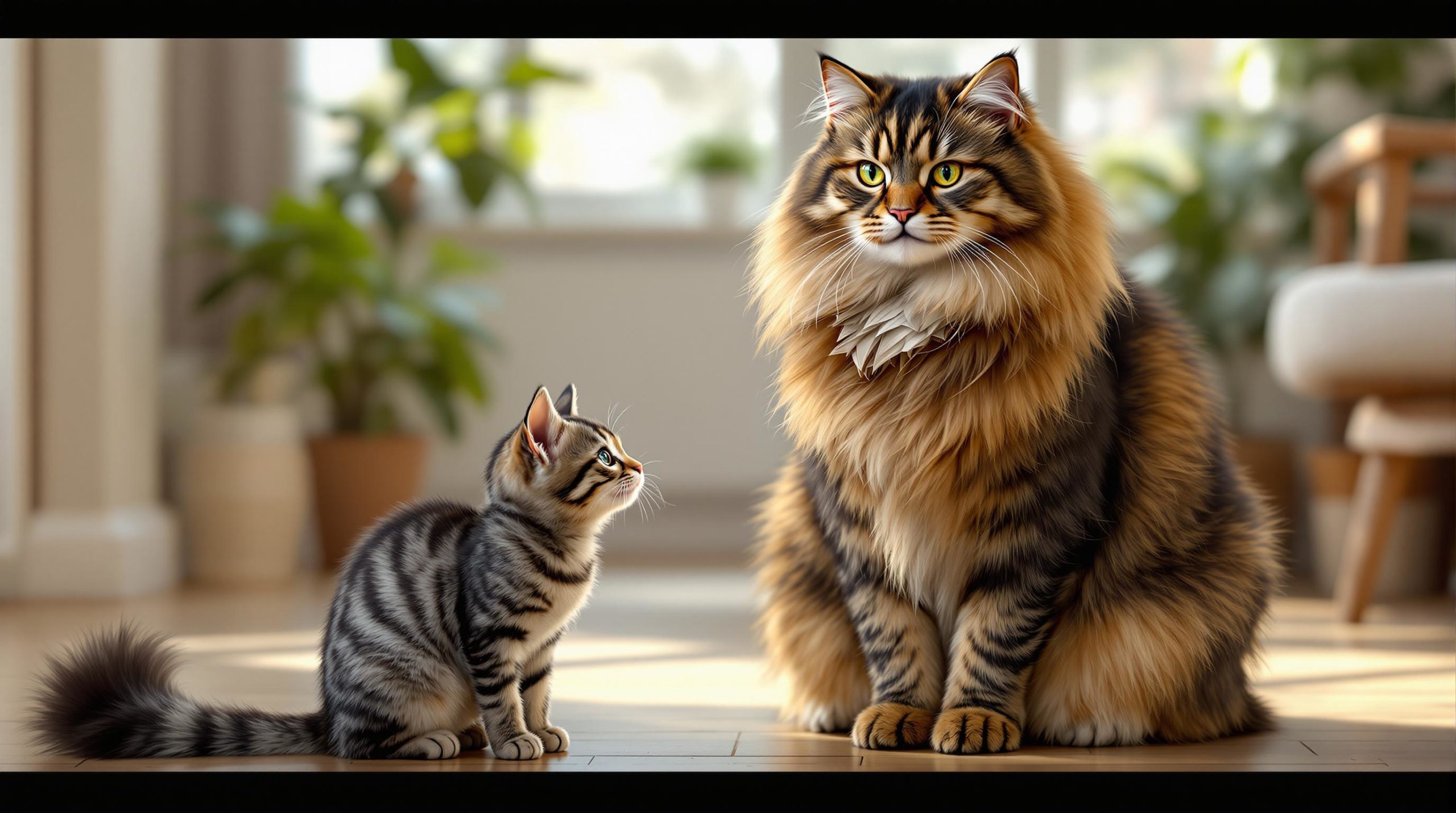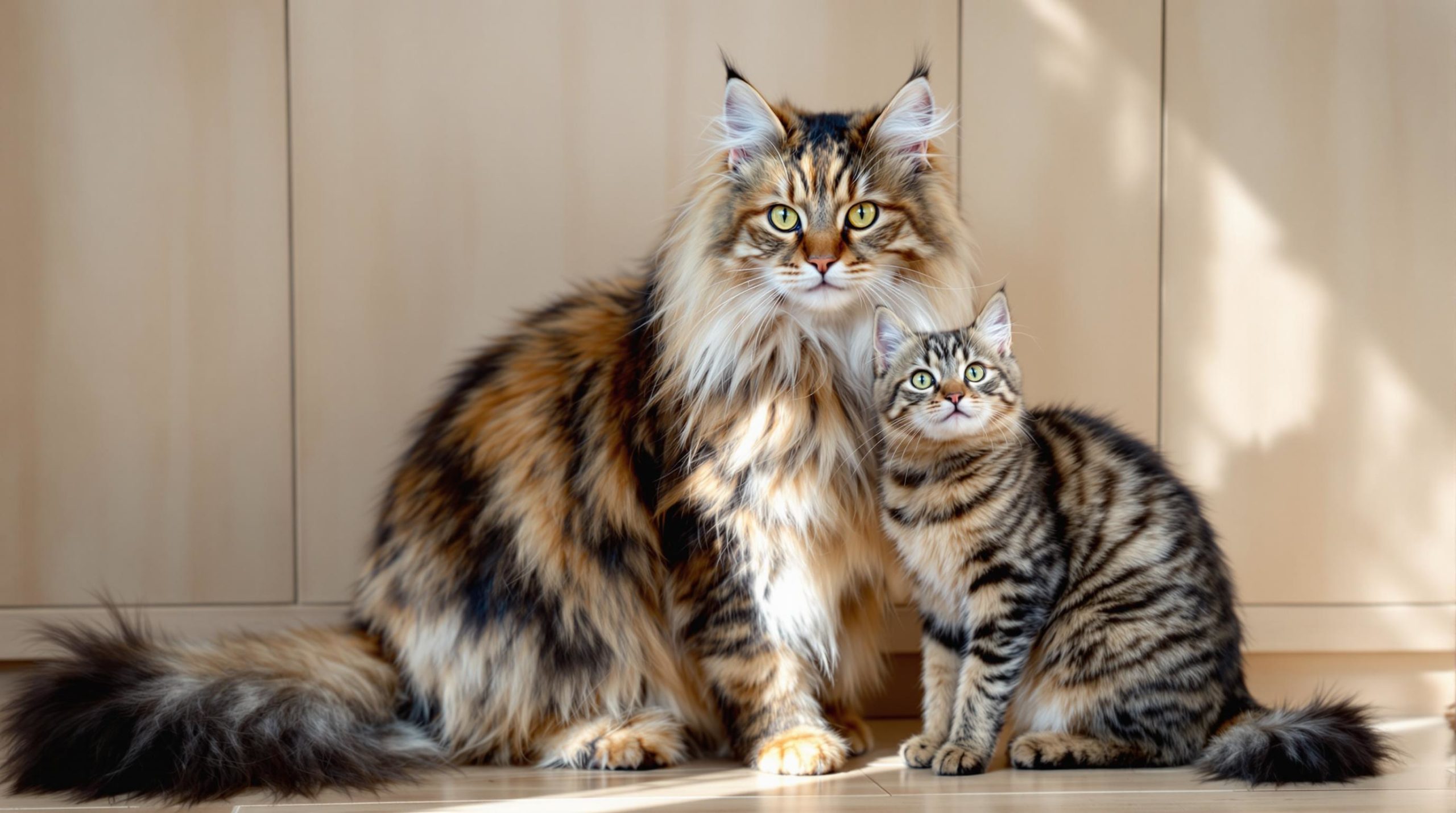distinguishing a maine coon from a tabby cat

Many cat lovers find themselves puzzled when encountering the majestic Maine Coon alongside a charming tabby cat. At first glance, their appearances can be deceptively similar, especially since Maine Coons often showcase tabby patterns. Yet, beneath the surface lie clear distinctions rooted in breed traits and coat characteristics. Understanding these nuances is essential for anyone passionate about feline care, adoption, or simply appreciating the rich diversity of cat breeds. This guide breaks down the critical differences, offering insightful details to help distinguish a Maine Coon from a typical tabby cat with confidence and clarity.
Understanding the Core Difference: Cat Breed vs. Coat Pattern
It’s crucial to start with the foundational difference in terminology. The term tabby cat doesn’t denote a specific breed; rather, it describes a distinct coat pattern characterized by stripes, spots, or swirling markings commonly seen in domestic cats. These patterns are ubiquitous and can appear across various breeds and mixed-breed cats.
On the other hand, the Maine Coon is a true cat breed with unique feline characteristics that extend well beyond mere coat patterns. Known as one of the largest and most sociable cat breeds, Maine Coons have a rich history dating back over a century in North America, particularly in the state of Maine, where they are recognized as the official state cat.
Key traits defining the Maine Coon breed:
- Large physique: They tend to grow larger and heavier than most domestic cats.
- Tufted ears: Lynx-like tips adorn their ears, distinguishing them visually.
- Double-layered coat: A thick, silky winter-proof coat designed for cold weather.
- Rectangular body shape: Unlike typical cats, Maine Coons have a longer torso with muscles adapted for strength.
Meanwhile, a tabby-patterned cat might be of any size, shape, or breed background, and many tabbies never exhibit the physical grandeur or specific coat features characteristic of Maine Coons.
| Feature | Maine Coon | Tabby Cat (Pattern only) |
|---|---|---|
| Classification | Specific cat breed | Coat pattern regardless of breed |
| Size | Large (up to 18–21 lbs for males) | Varies widely |
| Ear Tufts | Present (lynx-like tips) | Typically absent |
| Body Shape | Rectangular and muscular | Variable |

Spotting Size and Physical Attributes: When Presence Speaks Louder Than Patterns
One of the most straightforward ways to differentiate a Maine Coon from a tabby is by considering body size and proportions. Maine Coons are true giants among cats. Mature males often weigh between 18 and 21 pounds, while females typically weigh 12 to 15 pounds. This is significantly bigger than most tabby cats, which tend to have varied body sizes depending on breed and individual genetics, usually falling between 5 and 18 pounds.
Yet, size alone is not always determinant, given that some mixed breeds could inherit size traits resembling Maine Coons. Attention to body shape and distinctive features adds clarity.
Distinguishing physical traits to observe:
- Body build: Maine Coons have an elongated, rectangular body with a broad chest. Their muscular build provides a sturdy yet agile frame.
- Growth timeline: Unlike tabbies and most domestic cats, Maine Coons mature slowly, often achieving full size between 3 to 5 years old.
- Tail length and fur: Maine Coons possess a long, bushy tail, reminiscent of a raccoon’s, lined with thick, dense fur that aids in balance and warmth.
- Paw structure: Oversized, tufted paws protect them from harsh winters and act as natural snowshoes. Some Maine Coons even display polydactyly, meaning extra toes, which is rare among other cats.
In contrast, tabby cats can have tails of various lengths and coats but generally lack the plush fullness and length typical of a Maine Coon’s tail. Their paws are usually proportional without the distinct tufts or extra digits, unless they share heritage with the Maine Coon breed.
| Physical Attribute | Maine Coon | Typical Tabby Cat |
|---|---|---|
| Adult weight | 18–21 lbs (males), 12–15 lbs (females) | 5–18 lbs depending on breed |
| Tail | Long, plush, raccoon-like | Varies, often less dense |
| Paws | Large, tufted, occasional polydactyly | Standard size and shape |
| Growth duration | 3–5 years | Up to 1–2 years |
Analyzing Coat and Fur: The Maine Coon’s Signature Double Layer
Though tabby cats boast a stunning range of patterns from classic swirls to fine stripes, understanding coat structure helps differentiate the breeds beyond visual markings alone.
Maine Coons feature a luxurious double coat: a dense undercoat that provides insulation paired with longer, silkier outer guard hairs. This arrangement not only keeps them warm in harsh winters but also gives their fur a soft, flowing appearance contrasted with functional thickness. The breed standard highlights a pronounced ruff around the neck and feathered tufts on the lower legs—unique markers of the Maine Coon’s adaptation to cold climates.
Recognizable coat characteristics include:
- Pattern versatility: Maine Coons can display multiple tabby patterns — classic, mackerel, spotted, or ticked — along with solid, shaded, or smoke coats.
- Weatherproofing: The multi-layered coat repels water and protects against wind, distinguishing them from most domestic longhairs or tabbies who have single-layer coats.
- Textural qualities: A Maine Coon’s fur remains silky to the touch but remarkably thick, whereas tabby cats often have differing textures associated with their breed or mix.
Tabbies, on the other hand, lack the breed-specific ear tufts or undercoat density, regardless of their tabby pattern. Their coats might be single-layered or less voluminous, which affects grooming needs and overall resilience to weather changes.
| Coat Feature | Maine Coon | Tabby Cat |
|---|---|---|
| Coat layers | Double-layered (undercoat + guard hairs) | Typically single-layered |
| Patterns | All tabby variants plus solid and smoke | Tabby patterns only |
| Special features | Neck ruff, leg feathering, ear tufts | Rarely present |
| Coat texture | Silky and dense | Varies by breed |

Facial and Ear Features: The Elegant Markers of the Maine Coon
Another distinct avenue in telling these two apart is in their facial structure and ears. Maine Coons have a distinctive slightly wedge-shaped head with bold, high cheekbones and a square muzzle, imparting a noble expression. Their large ears not only stand tall but are broad at the base, capped with characteristic lynx tips—tuffs of fur extending from the ear tips.
In contrast, tabby cats—as a pattern group rather than breed—display a wide array of head shapes depending on their genetic lineage. Their ears usually lack the lynx-like tufts and tend to be smaller or less pronounced.
- Maine Coon ears: Large, wide at base, with internal fur for warmth and lynx-tip tufts.
- Tabby ears: Usually standard size with smooth edges and minimal internal fur.
- Facial shape: Maine Coons have angular features while tabbies might have rounded or pointed heads.
| Feature | Maine Coon | Tabby Cat |
|---|---|---|
| Head shape | Slight wedge-shaped; high cheekbones | Varies widely |
| Muzzle | Square and strong | Variable, many rounded |
| Ear size and features | Large, lynx-tip tufts | Typical size, no tufts |
Personality and Behavior: The Gentle Giant vs. The Diverse Tabbies
For many, distinguishing a Maine Coon involves understanding their renowned temperament, often described as the “gentle giant” of the cat world. Known for their intelligent, laid-back, and affectionate nature, Maine Coons communicate through unique vocalizations such as chirps, trills, and soft meows, resembling a friendly canine companion who may bond closely by following owners around the house.
Tabby cats, however, reflect the temperament of their broader breed or mixed-breed background. Their behavior can range widely from aloof to outgoing, influenced more by individual upbringing than coat pattern.
- Maine Coons: Social, playful, highly intelligent, and communicative.
- Tabbies: Varied personalities depending on lineage and environment.
- Both require attentive pet care, but Maine Coons might demand specific grooming due to their thick coats.
| Behavioral Trait | Maine Coon | Tabby Cat |
|---|---|---|
| Personality | Gentle, affectionate, dog-like loyalty | Highly variable |
| Vocalizations | Chirps, trills, soft meows | Varies widely |
| Activity level | Playful but laid-back | Depends on breed |
Frequently Asked Questions About Maine Coons and Tabby Cats
- Can a Maine Coon have a tabby coat pattern?
Absolutely! Maine Coons come in various colors and patterns, including all tabby variants such as classic, mackerel, spotted, or ticked. - Is it possible for a tabby cat to be confused with a Maine Coon?
Yes, especially if the tabby cat has a longer coat or a larger size. Careful examination of physical traits like ear tufts, paw size, and coat texture helps differentiate. - Are Maine Coons harder to care for than typical tabby cats?
Maine Coons require regular grooming due to their dense double coat, and their larger size demands appropriate nutrition. Tabbies, depending on their breed, might have varied grooming and dietary needs. - Can you adopt a Maine Coon from shelters, or do you have to buy from breeders?
Many shelters have Maine Coons or Maine Coon mixes available. Thorough research and patience are key. You can learn more about adopting Maine Coons here. - What should I feed a Maine Coon to keep it healthy?
Balanced cat nutrition rich in high-quality proteins supports their muscular build. Consulting veterinary experts and referring to guides like owning Maine Coons can provide detailed tips.